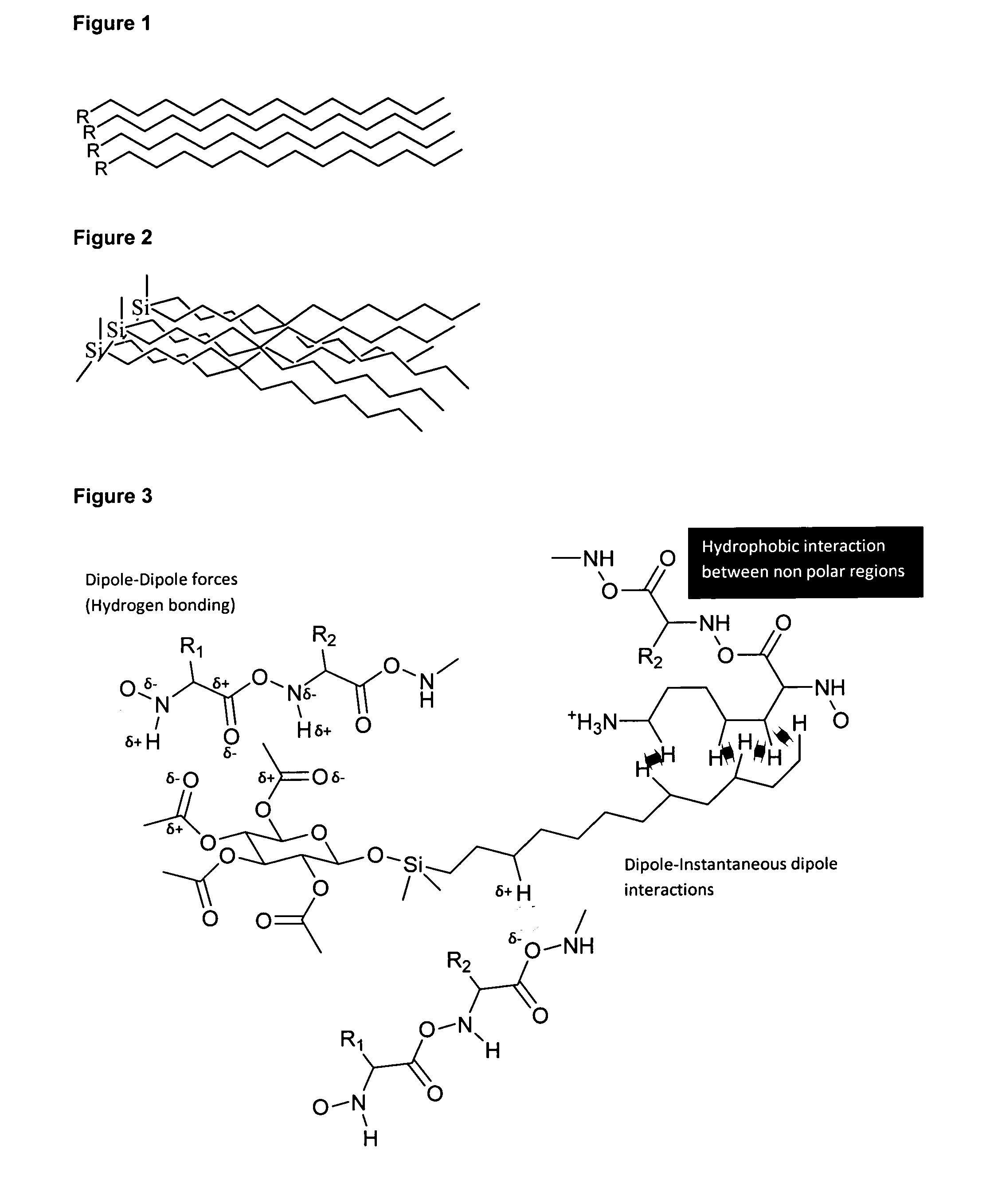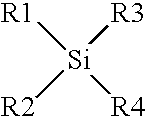Carrier system for biological agents containing organosilicon compounds and uses thereof
- Summary
- Abstract
- Description
- Claims
- Application Information
AI Technical Summary
Benefits of technology
Problems solved by technology
Method used
Image
Examples
example 1
Preparation of Di(Decanoyloxy)Dimethylsilane
[0180]0.012 mol dimethyldichlorosilane is added to 50 ml anhydrous ether, to which is further added 0.02 mol sodium decanoate under agitation at 40° C. To increase the yield, an excess of dimethyl dichlorosilane is added. This is followed by approximately another 3 hours of agitation at 40° C. For hydrolysis of the excess dimethyldichlorosilane, water is added and approximately 10 ml ether is applied for extraction 3 to 5 times. The combined ether extracts are dried over anhydrous sodium sulphate and, after filtering off, evaporated in a vacuum. The remaining di(decanoyloxy)dimethylsilane is recrystallised from heptane.
Molecular formula: C22H44O4Si
Molecular mass: 400.4 gmol−1
Melting point: 32-33° C.
Yield 92%
example 2
Preparation of Di(Octadecanoloxy)Dimethylsilane
[0181]0.012 mol dimethyldichlorosilane is added to 50 ml anhydrous ether, to which 0.02 mol sodium octanoate is further added, under agitation at 40° C. This is followed by approximately 3 hours of further agitation at the same temperature. Disintegration of the excess dimethyldichlorosilane in water is carried out as per example 1. Recrystallisation from heptane is then performed.
Molecular formula: C36H76O4Si
Molecular mass: 624.7 gmol−1
Melting point: 62-64° C.
Yield 68%
example 3
Preparation of Di(Octanoloxy)Diphenylsilane
[0182]0.01 mol dichlorophenyl saline is added to 50 ml anhydrous ether, to which 0.02 mol sodium octanoate is further added under agitation at 40° C. This is followed by approximately another 5 hours of agitation, after which water is added and approximately 10 ml of ether is applied for extraction three times. The combined extracts are dried over sodium sulphate and evaporated in a vacuum.
Molecular formula: C28H40O4Si
Molecular mass: 468.4 gmol−1
Melting point 88-90° C.
Yield 88%
PUM
| Property | Measurement | Unit |
|---|---|---|
| Temperature | aaaaa | aaaaa |
| Temperature | aaaaa | aaaaa |
| Mass | aaaaa | aaaaa |
Abstract
Description
Claims
Application Information
 Login to View More
Login to View More - R&D
- Intellectual Property
- Life Sciences
- Materials
- Tech Scout
- Unparalleled Data Quality
- Higher Quality Content
- 60% Fewer Hallucinations
Browse by: Latest US Patents, China's latest patents, Technical Efficacy Thesaurus, Application Domain, Technology Topic, Popular Technical Reports.
© 2025 PatSnap. All rights reserved.Legal|Privacy policy|Modern Slavery Act Transparency Statement|Sitemap|About US| Contact US: help@patsnap.com



